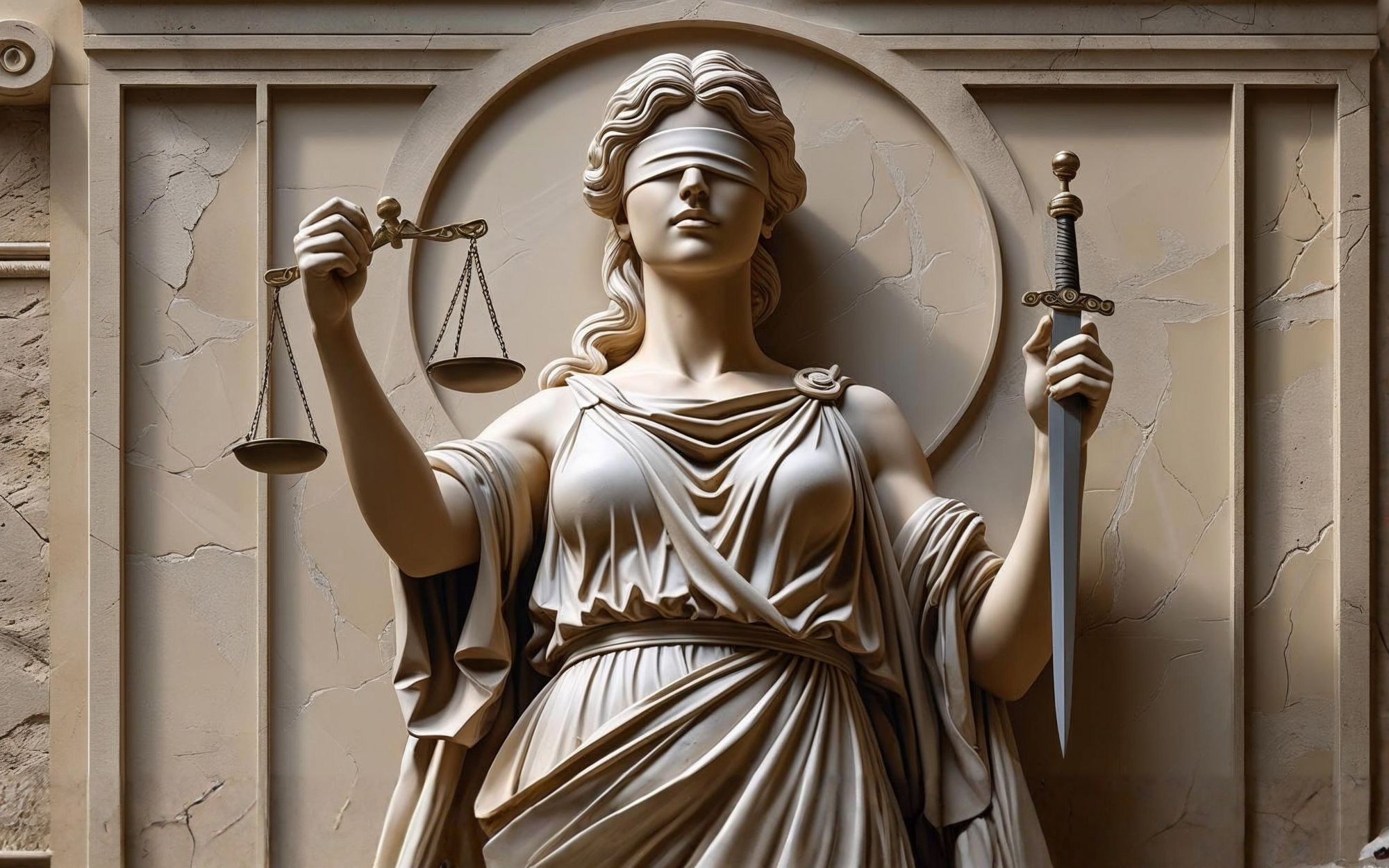
The death penalty has long stood at the center of philosophical, legal, and theological debates. Its defenders see in it the highest form of retributive justice, while opponents denounce it as an affront to human dignity. Recent comments by Pope Leo have suggested that one cannot truly call oneself ‘pro-life’ while supporting the death penalty, thus reigniting this debate in Catholic and public circles. This paper argues, however, that capital punishment, when properly applied, is morally justified according to the principles of Natural Law, retributive justice, moral agency, and longstanding philosophical tradition. By drawing from thinkers such as John Locke [5], Immanuel Kant [6], and Thomas Aquinas [7], as well as Catholic teaching and historical precedent, this paper situates the death penalty within the framework of justice rather than vengeance.
Recent remarks by Pope Leo claim that a true commitment to being ‘pro-life’ is incompatible with supporting the death penalty. While pastorally understandable, this position requires careful examination. From the standpoint of Natural Law, the right to life is not absolute in the case of those who have gravely violated the moral order. As Aquinas teaches, the common good of society is prior to the private good of the individual, and a murderer, by freely willing grave injustice, has forfeited his claim to life. Retributive justice further demands proportionate punishment. To execute a murderer is not to deny the sanctity of life but to affirm it by underscoring the seriousness of unjustly taking innocent life. Indeed, as Kant insisted, failing to execute a murderer would fail to treat the crime with the moral gravity it deserves. Thus, one may consistently uphold the sanctity of innocent human life while also affirming the justice of capital punishment for the guilty. Far from contradicting a pro-life ethic, this stance defends life by protecting the community and vindicating the moral order.

Crimes, Punishment, and Death: A Principled Defense of Capital Punishment
I. The Philosophical Question
The Internet Encyclopedia of Philosophy [1] defines capital punishment as an institutionalized practice designed to result in deliberately executing persons in response to actual or supposed misconduct, following an authorized, rule-governed process to conclude that the person is responsible for violating norms that warrant execution. The central philosophic question is one of moral justification: on what grounds, if any, is the state’s deliberate killing of identified offenders a morally justifiable response to voluntary criminal conduct, even the most serious of crimes, such as murder? Dostoevsky’s famous reflection [2] in The Brothers Karamazov captures the gravity of the question: “If God does not exist, everything is permitted.” This sets the stage for considering the moral legitimacy of the death penalty in societies ordered toward justice.
II. The Historical and Theological Tradition
The history of the Catholic Church reveals that capital punishment has been exercised within its jurisdiction. Giovanni Battista Bugatti [3], for example, served as the official executioner for the Papal States from 1796 to 1864, earning the title ‘Mastro Titta’—master of justice. Far from being motivated by bloodlust, executions were understood as a medicinal remedy, carried out with solemnity, repentance, and the opportunity for the condemned to prepare for eternity. Edward Feser [4] notes that papal executions emphasized the distinction between the guilty and the innocent: the guilty, by their actions, forfeited their right to life, whereas the state retained authority to enact justice. The symbolism of Lady Justice—blindfolded impartiality, balanced scales, and the sword of authority—embodies this philosophical posture.
III. Preservation of his garb (see photo below)
Today, Bugatti’s robe and other tools, such as his axe and guillotine, are preserved as historical artifacts and are on display at the Museum of Criminology (Museo Criminologico) in Rome, Italy.
Modern culture has also wrestled with this reality. In the film Dead Man Walking [12] (1995), the condemned man, played by Sean Penn, only confessed to his crime when confronted with the inevitability of execution. The gravity of facing death moved him to truth, repentance, and moral reckoning. This narrative resonates with the historical role of the monastic orders in the Middle Ages, whose ministry often centered on preparing the condemned for execution. Monks would accompany prisoners to the gallows or the block, urging them to confess their sins and seek reconciliation with God before their final breath. These practices reflected the conviction that while temporal justice required execution, eternal judgment belonged to God alone. After death, the condemned would stand before Divine Justice and face their eternal destiny, whether Heaven or Hell. Thus, capital punishment was not only an earthly sentence but also a last opportunity for spiritual conversion before the ultimate judgment of God.
IV. Retributive Justice
Retributive justice asserts that punishment must be proportionate to the crime committed, directed not by revenge but by reasoned justice. When one commits a grave crime, justice demands a penalty equal in gravity. John Locke [5], in his Second Treatise on Government, argued that murderers, by their voluntary wrongdoing, forfeit their own right to life and can therefore be treated as without such a right. Immanuel Kant [6] went further, insisting that if a person has committed murder, they must die. For Kant, there exists no proportional substitute for the punishment of death; only death satisfies the equality of retribution. In this sense, the death penalty is not an act of vengeance but the only adequate response to certain crimes.
V. Natural Law and Moral Agency
Thomas Aquinas [7] taught that Natural Law is ‘nothing else than the rational creature’s participation in the eternal law.’ The precepts of Natural Law include preserving life, pursuing truth, living in society, and avoiding murder. When individuals freely commit acts of grave injustice, they violate these fundamental precepts. Because humans possess free will and moral agency, they are accountable for their actions. Wrongdoers deserve punishment, and the graver the wrong, the severer the punishment deserved. Some crimes are so grave that no penalty short of death is proportionate to the harm caused. Thus, the state, acting as a public authority, possesses the right in principle to inflict the death penalty on those who commit the gravest offenses.
VI. Principle versus Application
While the death penalty is justifiable in principle, its application in practice requires prudence. Modern objections to capital punishment often center on issues such as the risk of executing innocents, disparities in sentencing, or the unequal moral outrage directed at other social evils, such as abortion. These objections highlight the fallibility of human systems, not the principle of capital punishment itself. Justice requires proportionality, impartiality, and respect for human dignity. Properly applied, capital punishment reflects the seriousness of crime and society’s deep obligation to solidarity with victims and the moral order.
VII. Sacred Scripture
Sacred Scripture consistently affirms the legitimacy of capital punishment in principle, presenting it as a means by which God’s justice is enacted within human societies. In Genesis 9:6 [8], following the covenant with Noah, God declares: ‘Whoever sheds the blood of man, by man shall his blood be shed; for God made man in his own image.’ This foundational text establishes both the dignity of human life and the seriousness of taking it unjustly, prescribing death as the fitting punishment for murder. The Mosaic Law likewise attaches the death penalty to grave offenses such as murder, adultery, idolatry, and blasphemy (cf. Exodus 21:12 [9]–17; Leviticus 20:10 [10]; Deuteronomy 13:5–10). In the New Testament, St. Paul acknowledges the authority of the state to wield the sword as a servant of God to execute wrath upon the wrongdoer (Romans 13:4 [11]). Far from being contrary to the Gospel, these passages reveal that capital punishment, when exercised justly, reflects the divine order of justice and the seriousness of sin. Thus, Sacred Scripture supports the state’s authority in principle to impose the death penalty for the gravest crimes.
This dynamic is illustrated in both historical practice and cultural narrative. In the film Dead Man Walking [12], the condemned man only confessed when faced with certain execution, showing how the imminence of death can lead to repentance and truth. Similarly, during the Middle Ages, monastic orders dedicated themselves to ministering to the condemned, accompanying them to the place of execution and urging reconciliation with God. Such ministries underscored that while earthly justice demanded death, eternal judgment remained in God’s hands. In this way, capital punishment historically served not only the ends of temporal justice but also as a final summons to conversion before facing the divine tribunal. Thus, the death penalty, when administered with justice and mercy, vindicates society’s moral order while also offering the guilty a last chance to repent before entering eternity.
VII. A Rebuttal to Pope Leo’s Statement
The death penalty, grounded in Natural Law, retributive justice, and moral responsibility, remains a morally justifiable form of punishment in principle. It does not exist as an act of vengeance but as the restoration of moral order. Thinkers such as Locke, Kant, and Aquinas, alongside Catholic historical practice, affirm that some crimes demand the ultimate penalty to satisfy justice. As Dostoevsky cautioned, a world without God permits everything. But under God’s law and the rational order of justice, even death as a penalty can serve the dignity of the human community and the defense of truth and order.
Conclusion
In conclusion, the death penalty, properly understood and applied, is not a denial of the dignity of human life but its ultimate affirmation. Rooted in natural law, retributive justice, and the moral responsibility that flows from human freedom, capital punishment remains a proportionate response to the gravest offenses against the moral order. Critics, such as Pope Leo, have argued that one cannot be authentically pro-life while affirming the justice of execution. Yet this paper has shown that upholding justice for the innocent and protecting society from grave wrongdoing are themselves essential expressions of a culture of life.
This truth has been reflected in both cultural narrative and historical practice. In the film Dead Man Walking, the condemned man confesses his crime only when confronted with his inevitable execution, illustrating how the finality of death can summon repentance and truth. Likewise, during the Middle Ages, monastic orders accompanied the condemned to the scaffold, urging sacramental confession and reconciliation with God. While temporal justice demanded their lives, eternal judgment awaited them before God’s tribunal.
Thus, capital punishment has historically functioned not only as society’s vindication of justice but also as a final summons to conversion. When exercised with prudence, justice, and mercy, the death penalty reaffirms the sanctity of innocent life, restores moral order, and offers even the guilty a last chance to repent before entering eternity.
Footnotes
- Internet Encyclopedia of Philosophy, “Capital Punishment,” accessed 2025.
2. Fyodor Dostoevsky, “The Brothers Karamazov”, trans. Richard Pevear and Larissa Volokhonsky (New York: Farrar, Straus and Giroux, 1990).
3. “Giovanni Battista Bugatti,” Wikipedia, last modified 2025.
4. Edward Feser and Joseph Bessette, “By Man Shall His Blood Be Shed: A Catholic Defense of Capital Punishment” (San Francisco: Ignatius Press, 2017).
5. John Locke, “Second Treatise of Government”, ed. C. B. Macpherson (Indianapolis: Hackett, 1980).
6. Immanuel Kant, “The Metaphysics of Morals”, trans. Mary Gregor (Cambridge: Cambridge University Press, 1996).
7. Thomas Aquinas, “Summa Theologica”, trans. Fathers of the English Dominican Province (New York: Benziger Bros., 1947).
8. The Holy Bible, Genesis 9:6 (Revised Standard Version).
9. The Holy Bible, Exodus 21:12 (RSV).
10. The Holy Bible, Leviticus 20:10 (RSV).
11. The Holy Bible, Romans 13:4 (RSV).
12. “Dead Man Walking”, directed by Tim Robbins (Los Angeles: PolyGram Filmed Entertainment, 1995). See also historical accounts of medieval monastic orders accompanying the condemned to execution, as described in Richard Kieckhefer, “Repression of Heresy in Medieval Germany” (University Park: Pennsylvania State University Press, 1979).
Source Note
This document was drafted with the assistance of OpenAI’s ChatGPT (GPT-5) as a collaborative writing and research tool. The content has been reviewed and refined for scholarly use.
Giovanni Battista Bugatti Garments

